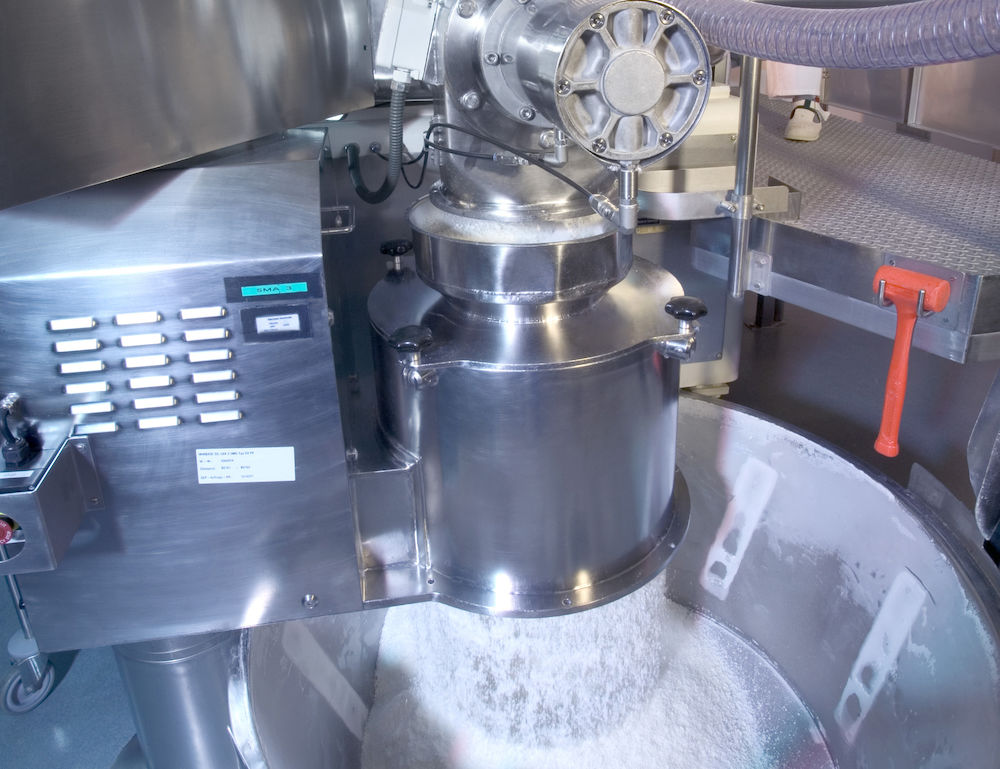
Increased productivity in spray drying application
In a pneumatic conveying system, the contact between the air and the conveyed product is very close which means that a dried product can reabsorb humidity if the conveying air is humid. To prevent this pneumatic conveying systems are equipped with dehumidifiers to keep raw materials fast flowing and free from clumping.
No product sticking
Spray towers
Almost regardless the product the capacity of spray towers can be optimised and the energy consumption reduced by dehumidifying the air for the spray tower. For a product such as whey powder the capacity enhancement is in the magnitude of several tens of percent. By drying with a desiccant dehumidifier the operating parameters of the tower can be kept constant throughout the year.
Filters
Air containing particles from the process are usually filtered before the outlet to the open air. During periods of standstill the segregated hygroscopic product in the filter can absorb humidity and thereby clog up the filter. With a Munters dehumidification system the filter is kept dry even during periods of standstill.
Cheese stores
In a room kept cool by air circulating through an air cooler a certain amount of condensation on the cooling surfaces is common due to the air being dehumidified to some extent. The resulting relative humidity depends on a range of factors. The lower the temperature, the less the dehumidification. Often the relative humidity in the cooled room exceeds 70%RH at which point there is a risk of mould. The solution is desiccant dehumidification as it is equally efficient at all temperatures. Many cooled rooms such as cheese store have been equipped with desiccant dehumidifiers.
Drying before packing
Some kinds of cheese are given soft coatings so have to be completely dry before the coating can be applied. A completely dry surface is obtained by the use of desiccant dehumidification, drying the cheese quickly, without having to raise the temperature.
Drying after cleaning
When cleaning with water the drying process can be accelerated with dehumidified air, reducing the risk of bacterial growth. Dehumidified air can be blown into the room or the equipment that has been cleaned. This is especially efficient for products that are difficult to heat or need to be kept cold. Dehumidification can also be used to maintain a humidity level so that the cleaning intervals can be prolonged leading to cost reductions.
Increased drying efficiency and climate control.
Munters desiccant dehumidifiers work by passing moist air through a slowly revolving silica gel desiccant wheel. The resulting ultra dry air is then pumped back into the store, conveying system, spray tower or silo, allowing the products to flow freely and increase drying efficiency or climate control.



